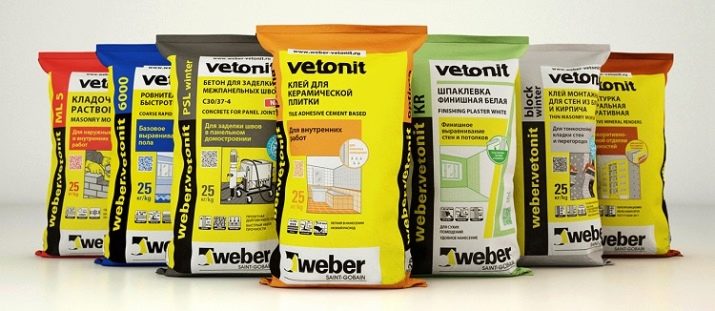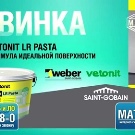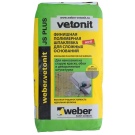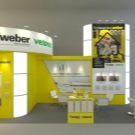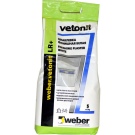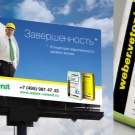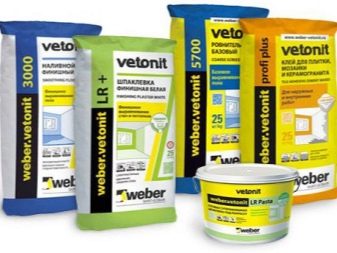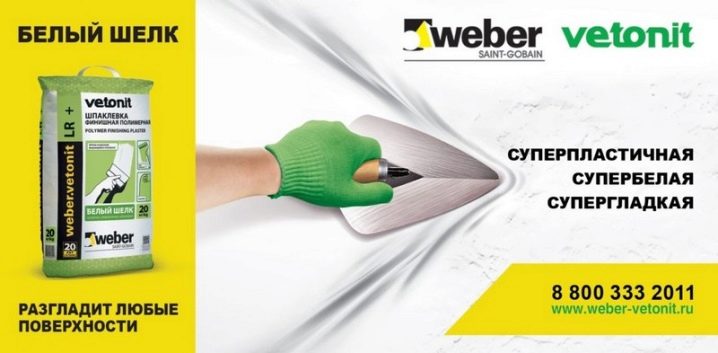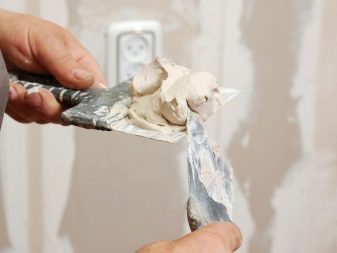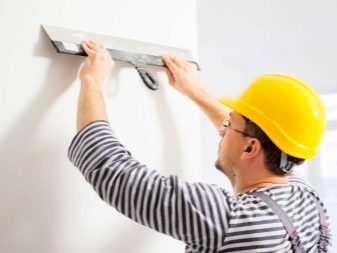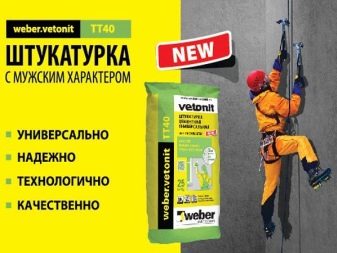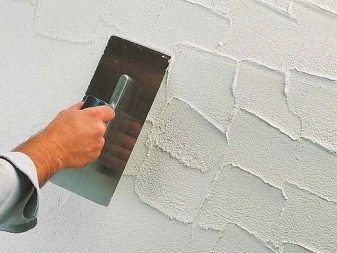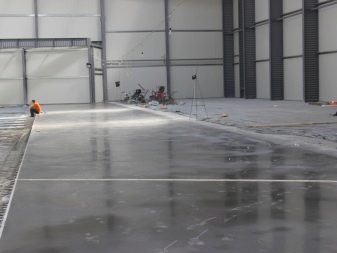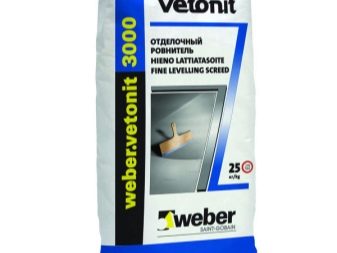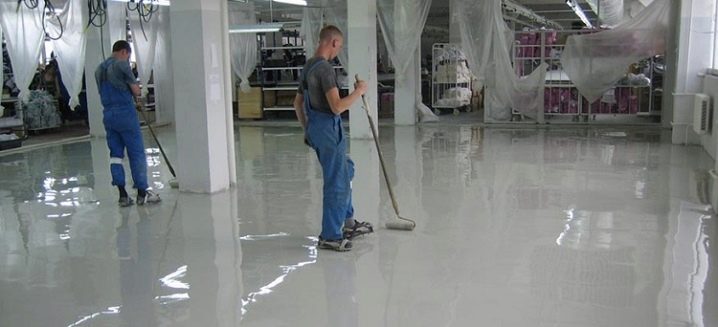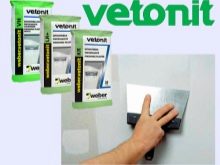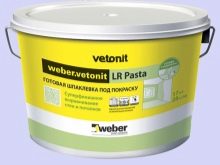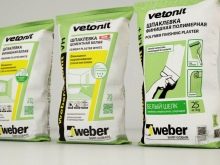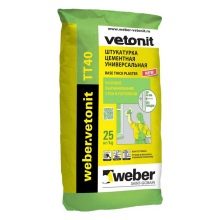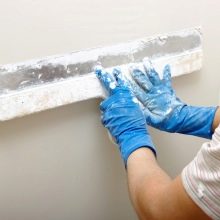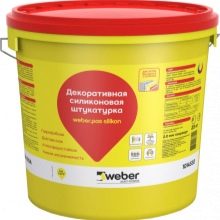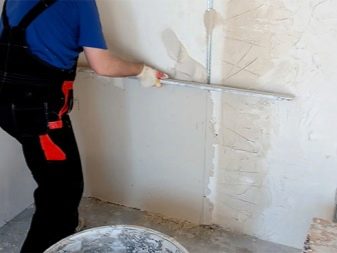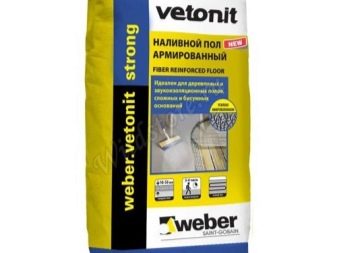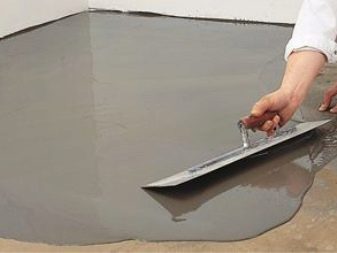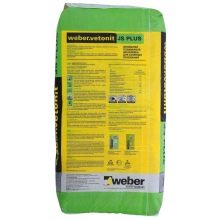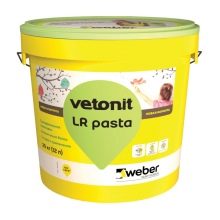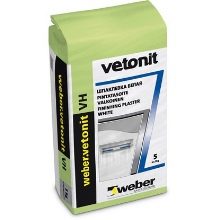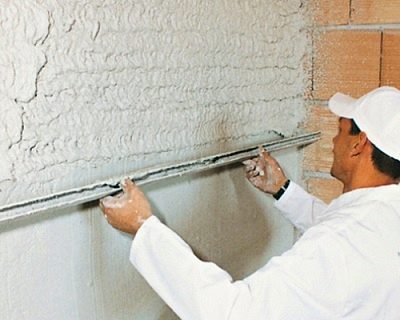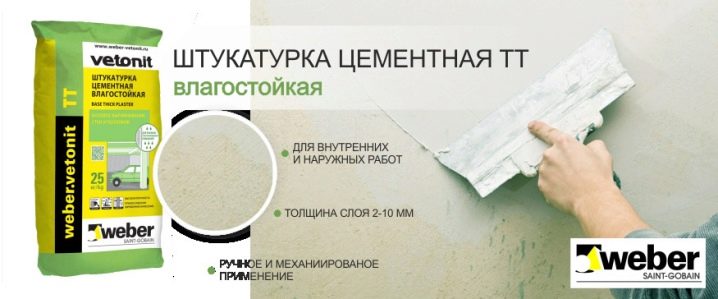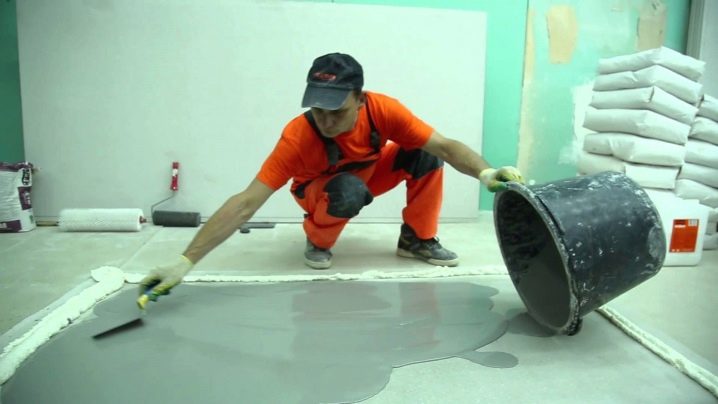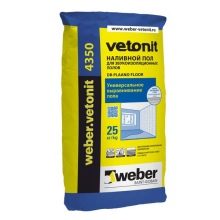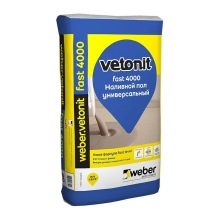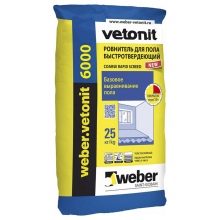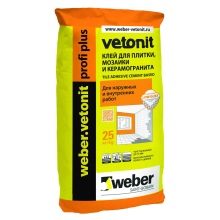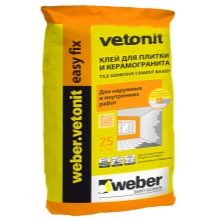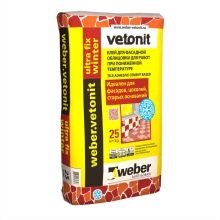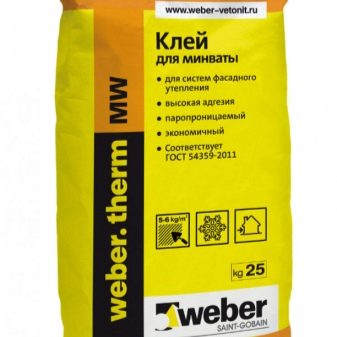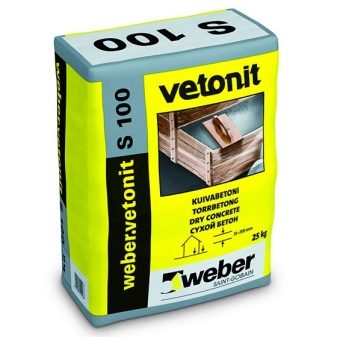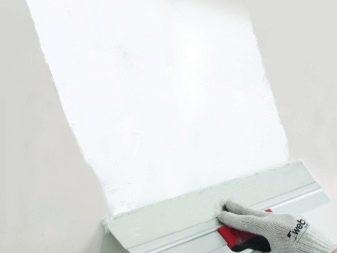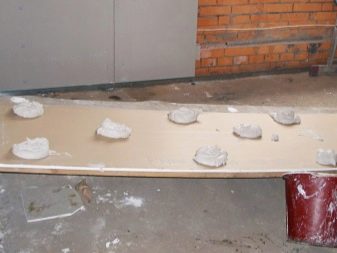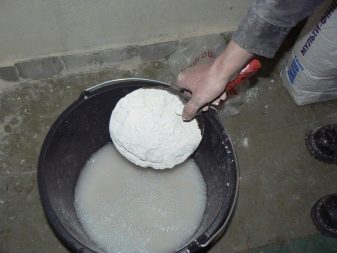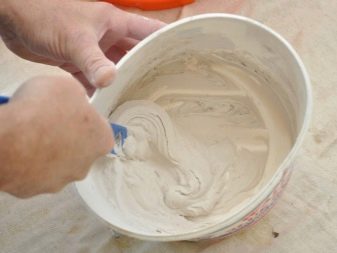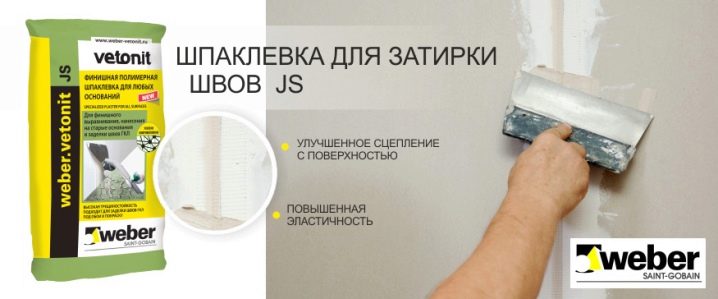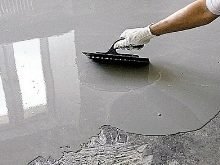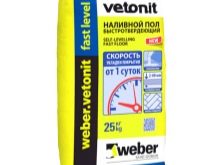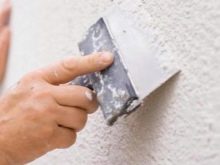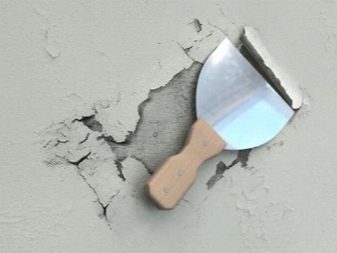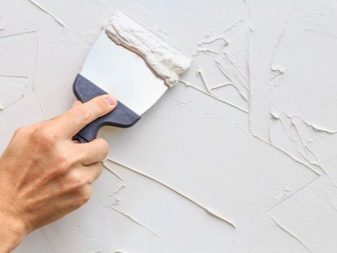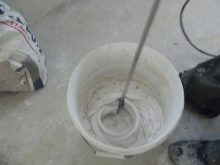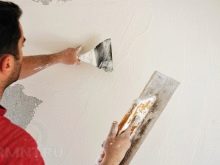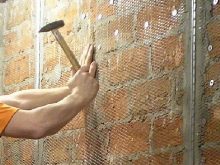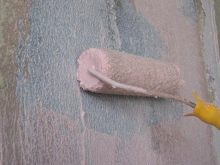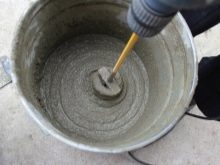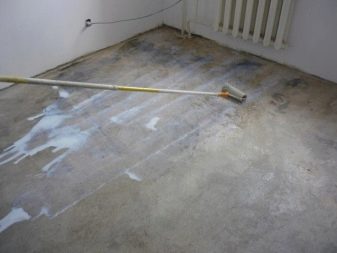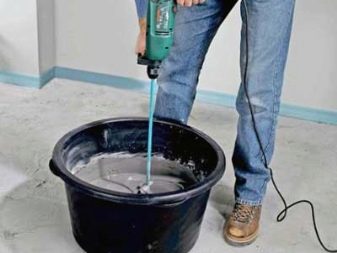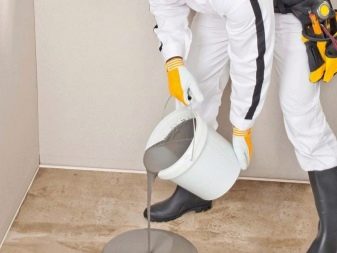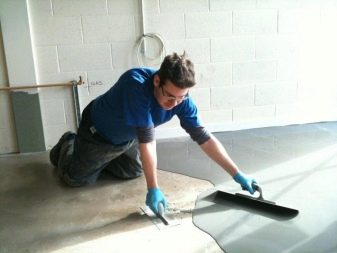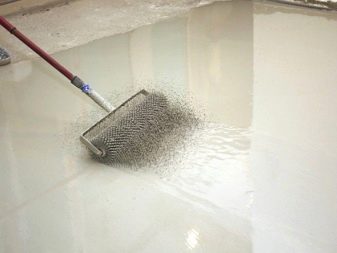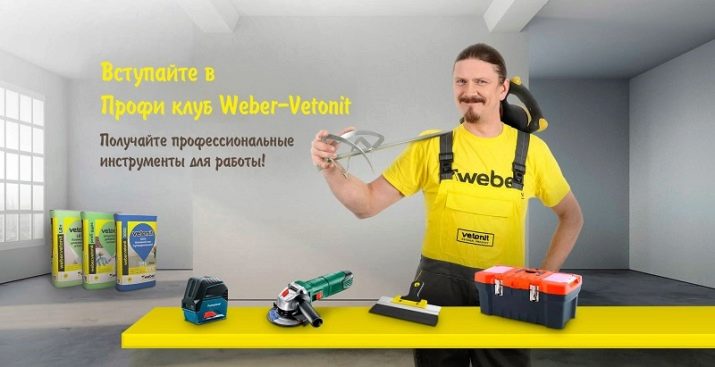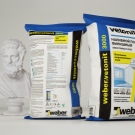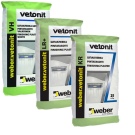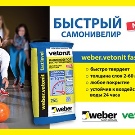Vetonit: description and characteristics of products
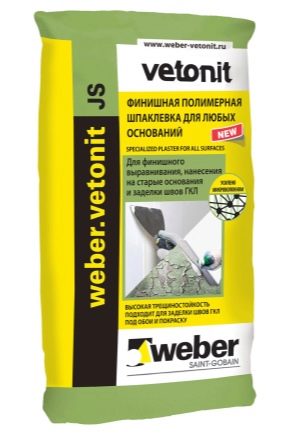
To date, one of the most popular building materials are various dry mixes. They are easy to use, they are reliable and inexpensive. However, such words cannot describe the entire range on the market. In order not to purchase goods of inadequate quality, it is necessary to give preference to products of proven manufacturers, which is Vetonit by right.
Special features
The company manufactures powdered building mixtures, which are widely used in decoration and construction. The most popular are the finishing putty and screed of this brand, as well as tile adhesive. In our country there is a branch of the international group of companies Saint-Gobain called Weber-Vetonitwhich represents dry mixes of the Vetonit brand in the domestic market.
Putties, plasters and self-leveling floors produced by Vetonit are in the greatest demand.
Putty
Mix is used at a stage of finishing alignment of various surfaces. Quality and a general view of finished work depends on correctness of drawing. Vetonit putty is designed to fill cracks and crevices and create an ideal surface after major work.
Depending on the composition, there are three types of such a mixture: gypsum, polymer and cement. They can be applied both on ordinary concrete or brick, on drywall and even on painted walls, both inside and outside the room. And on the putty itself is allowed to apply any decorative coatings - tiles, wallpaper, various paints and decorative plasters.
The advantages of the Vetonit brand products are the versatility and environmental friendliness of the putty. Created from components that are safe both for nature and for humans, it can even be used to finish the indoor pool.The powder particles of such a mixture are so small that the finished layer of putty has almost a mirror smoothness. It is resistant to aggressive weather events in the form of frost or hail, therefore it is suitable for facade decoration and can be applied even at sub-zero temperatures.
In addition to decorative properties, Vetonit increases the insulation of the room and enhances the sound absorption of surfaces.
Plaster
In the domestic markets there are several types of dry plaster from Vetonit, which are supplied both from abroad, for example, Finnish mixtures, and are made directly at Russian factories. As a rule, these are cement mixtures with sand or limestone and additional components in the composition in the form of various microfibers.
Buyers can choose one of the universal blends that are suitable for most bases, or a special composition for decoration. Such decorative plaster can be applied to the surface treated with the usual composition and create a relief pattern with their help.
One of the advantages of a dry mix of the Vetonit brand is the possibility of applying to almost any surface, ranging from concrete and brick to ceramics and gypsum. Subsequent finishing is also possible with most well-known coatings - wallpaper, tile, plaster and even glass decorative plates. The plaster is waterproof and not susceptible to deformation in the cold, which allows it to be used for exterior decoration of facades and rooms with high humidity. It perfectly adheres to most surfaces and hardens without shrinkage.
Self-leveling floors
Self-leveling mixes Vetonit, used as a screed, allow for a single pass to create the ideal self-leveling floor thickness from 1 to 250 mm. The solution is suitable for the repair and decoration of both new residential and office premises, and buildings with a long service life.
The advantage of the brand is high compressive strength, which allows the coating to withstand significant loads. Additional internal rationing will further strengthen this figure. The self-leveling floor can be covered even with very thin finishing materials or left without any finishing, as it has a smooth surface and does not require polishing.
The mixture quickly gains strength, which implies the ability to walk on such a floor within two to three hours after laying.It can be poured even on top of wood or ceramics due to the presence in the composition of special polymers.
Bulk floor Vetonit moisture-proof and heat-resistant, as well as a sound-proof surface.
Specifications
- The putty is available in the form of a dry powder, packaged in 5, 20 or 25 kilograms. Three-layer bags act as a container, the middle layer of which is made of polyethylene, and the outer and inner layers are made of paper. It is also possible to release in the form of paste in plastic trays of 10-12 liters.
- The binder may be one of the following: limestone, gypsum, glue, or cement. The shade of the finished coating corresponds to the color of the mixture itself in a dry form. It may be with a predominance of white, gray or yellow pigment.
- The mixture is fine-grained, the size of powder grains is 0.3-0.5 mm in a dry mixture and not more than 0.06 mm in a paste.
- The temperature of the air when working with the mixture should range from +5 to +25 for conventional compositions and not less than -10 degrees for special cold resistant.
- Per 1 square meter will need 1.2-1.4 kg of dry mix to create a coating layer with a thickness of 1 mm. Filling the joints is more economical, you need only 100-200 grams per 1 m2 of surface. On 1 kg of the mixture will need about 300-350 ml of water.
- Diluted putty should be used within 1.5-2 hours. If the composition has polymers, then the time increases to 12-24 hours. Re-dilution of the frozen mixture is not recommended. The applied putty stiffens in 3 hours, and dries completely and is ready for further processing in no less than a day.
In one pass, it is recommended to apply a layer with a thickness of not more than 1 mm. The adhesion coefficient of the composition is 0.9-1 MPa, and the mechanical load, which it is able to withstand in finished form, is about 10 MPa. In a dry room with a humidity of less than 60%, Vetonit putty is stored for 12-18 months subject to the integrity of the factory packaging.
Technical characteristics of Vetonit plaster are in many respects similar to the characteristics of putty.
- Plaster is also packaged in paper bags of 5, 20 and 25 kilograms. Decorative types of solution can be sold in plastic trays of 15 kg.
- Cement acts as a binder, because of which the color of the finished coating is obtained with a gray tint.
- The size of the dry matter fraction is no more than 1 mm for simple plaster and from 1.5 to 4 mm for decorative.
- The solution is applied at air temperatures from +5 to +30 degrees using conventional plaster. When buying a special cold-resistant mixture, the temperature can drop to -10 degrees.
- To apply a layer of 1 mm to an area of 1 square meter, it is necessary to take from 1.2 to 2.4 kg of dry powder. Water consumption per 1 kg of plaster powder ranges from 200 to 300 ml, depending on the recommendations on the package.
- It is necessary to use plaster within 2-3 hours, and one of its layers 2-10 mm thick dries completely within 2 days.
- The adhesion coefficient with concrete is 0.5 MPa, and the load that the coating can withstand is 6-8 MPa.
- Stored Vetonit plaster throughout the year, subject to the integrity of the factory packaging.
The technical parameters of the self-leveling mixture for laying on the floor also differ little from other mixtures.
- Bulk floor Vetonit is available in large paper bags of 5 and 25 kilograms.
- The middle layer of the package, like that of the putty, is made of polyethylene.
- Binder is a special cement that causes a gray tint of the finished coating.
- Powder particles ranging in size from 0.6 mm to 3 mm allow the thickness of the finished layer from 1 mm to 250 mm.
- The consumption of a dry mixture when applied in a layer of 1 mm is 1.4-1.8 kg per square meter. For the preparation of plaster for 1 kg of dry powder you need 200-300 ml of water.
- The allowed temperature for working with the mixture is from + 10 to + 25 degrees.
- The prepared solution should be immediately applied to the surface, as it begins to harden after 15-20 minutes. The full drying time is 2–3 hours, and one hour after application to the floor it is already possible to walk on the floor.
- Shrinkage of the hardened solution by 0.5 mm / m is possible.
- The adhesion coefficient of the composition with concrete is 1 MPa, and the permissible load on the surface is up to 30 MPa.
- Unpacked container allows you to save the plaster for 6-12 months in a dry place.
Species
Depending on the purpose, the putty may be:
- leveling, which impose on concrete or plaster before the subsequent decorative finish;
- for seams;
- for a surface that has already been painted.
Each of these types of putty is represented by the Vetonit trademark under its name and price.
- "Finish-LR +" and "Finish-KR" used for work in dry areas and used for walls and ceilings. The average cost of one package of such a mixture is from 650 to 700 rubles.
- Super Finishes "Finish-KR", "JS Plus" and "LR-paste" designed to give perfect smoothness at the final stage of finishing works, and putty "Siloite gyproc JS" designed exclusively for grouting plasterboard joints.
- For work in rooms with high humidity is perfect "Finish VH" price of 600-650 rubles per pack.
- And for the facades should choose a mixture "Rend Facade" for 450 rubles.
Depending on the type of plaster is necessary in the following cases:
- full alignment of ceilings and walls;
- alignment of certain surface areas for subsequent finishing work;
- applying a decorative plaster layer for further painting inside and outside the room.
Cement-based plaster with the marking "TT" and "TTT" has increased frost resistance and moisture resistancethat allows you to use it for outdoor work. The cost of one package of such a mixture ranges from 350 to 400 rubles. Also as a facade plaster can be used cement mixture "Stuk cement", which can be applied with a layer up to 5 cm. The lime-cement composition of the brand 414 plaster includes special microfibers, which increase the strength and adhesion coefficient.
Decorative types of plaster min 1.5 Z, min 2.0 Z and min 2.0 R allows you to create the effect of "fur coat" and "bark beetle" and sold at prices ranging from 1600 to 2000 rubles per pack of 25 kilograms. Textured plaster with a min 1.5 winter mark allows finishing work at a temperature of -10 degrees.
The main purpose of self-leveling screeds are:
- creation of the "warm floor" system;
- creation of flooring on unheated balconies and terraces;
- the creation of screeds for the subsequent decorative coating;
- alignment of rough surfaces of concrete or cement.
There are many varieties of self-leveling floor Vetonit.
- This and the usual brand 4150 and 4350 in the price range from 550 to 1000 rubles, and a mixture of 4601 for industrial premises.
- The universal self-leveling mixes 3000, 3100 and 4000 can be used both for interior work and for finishing open balconies and grounds.
- Fast Level and 4100 fast-dry levelers are from 3 to 60 mm thick and are used on simple bases.
- . Cheaper options are the numbers 5700 and 6000. The first self-leveling mixture costs about 300 rubles, and the Vetonit 6000 self-leveling floor, which hardens for 3 hours, is priced at 375-385 rubles per 25 kg package.
In addition to the above products, various adhesive mixtures are also presented on the domestic market. The price range for glue from the company Vetonit ranges from 200 to 1000 rubles, depending on the destination.
- For example, the glue mix “Profi Plus” is sold for work with porcelain stoneware, “Mramor” for work with light tiles and “therm S100”, which is a versatile material.
- All of them are used for interior work, but in order to glue building materials outdoors, it is worth choosing an “Easy fix” or “Ultra fix”.
- For finishing of the facade, you can buy the adhesive mixture of the brand “Ultra fix winter”, and for working in rooms with high humidity, dry Optima glue is perfect.
- There are brands of adhesive mixture of a rather narrow application, for example, Vetonit MW is used only for joining slabs made of mineral wool.
Vetonit also produces mixtures for laying brick and stone, priming and grouting, and even stove mixes that withstand high temperatures and are used to build fireplaces and stoves. Colored cement grout is perfect for finishing joints of various sizes, and for rooms with high temperature differences it is worth buying two-component epoxy compounds. On the shelves you can find all sorts of primers, paints, impregnations and antiseptics. The so-called “dry concrete” is produced for casting into molds.
Scope of application
Depending on the type of dry mix, whether it is a putty, plaster, or a self-leveling floor, its range of application may vary significantly.One type can be putty walls only in dry rooms, and the other - in wet. There are both cold-resistant mixtures, as well as mixtures, which require a temperature of more than 5 degrees to work with.
There is a special glue for granite, for floor and wall tiles, for drywall and even for facade work. There are special mastics for the installation of elastic waterproofing.
All Vetonit dry mixes must be applied to previously prepared surfaces from which the old finish has been removed. It is best to dilute such mixtures with warm water, based on the instructions on the package. You can mix the solution either mechanically or simply with your hands, after which you need to let the solution stand for 10 minutes.
It is not necessary to dilute immediately a large volume of solution, so that in the process of work the residue will not thicken and not lose its properties.
How to choose?
A guarantee of an excellent result even of such a high-quality product as Vetonit is the correctness of the selection of the mixture to one or another condition. For example, for wet rooms it is worth choosing mixtures based on cement, and for dry rooms all types of mixtures can be used.Plaster solutions for indoor work will not retain their properties when finishing the facade, and facade plaster will not look too aesthetically pleasing in a residential apartment.
Do not exceed the maximum permitted coating thickness, as this will lead to partial or complete deformation of the coating.
Putty is best chosen depending on the working surface for higher adhesion of materials. So, it is best to put a mixture intended for working with concrete on concrete, and a brick with a brick on a brick.
It is also necessary to take into account the very purpose of the mixture. For example, a self-leveling screed, which is supposed to be applied subsequent finishing, should not be laid as a floor covering and vice versa. You should also pay attention to the temperature at which work with one or another composition is allowed.
Vetonit products are easily recognizable by yellow or white bags with the manufacturer's logo and the name of the product on the black part of the bar on the left. The color part of this bar contains information about the brand of goods.
Tips and tricks
In general, work with Vetonit dry construction mixtures is carried out according to the same algorithm as works with mixtures of other manufacturers. Instructions for creating a solution is always indicated on the manufacturer's packaging and is the best option for its preparation.
- The putty of this brand can be applied to the work surface either with the help of special mechanisms and installations, or manually, using a rule and a spatula.
- The surface must be pre-prepared - cleaned of old finishes, dirt and dust. It should be dry, free from oil or grease and sufficiently hard.
- In the room in which there is a finishing, there should not be drafts, therefore it is better to close windows and doors.
- The mixture does not have harmful fumes or strong odor, so work even in a fully enclosed area will not cause a deterioration in well-being.
In order to prepare the mixture according to the instructions on the package, it is best to choose plastic containers. Water into which the powder is gradually poured should be at room temperature of 20 to 25 degrees. It is not necessary to change the sequence and pour water into the powder, as this can lead to the mixture being too liquid, and there is no longer enough powder to correct the error.
The resulting solution should be thoroughly mixed with a drill with a special nozzle or a mixer for 5 minutes and give 5-10 minutes just to infuse. After that, the solution is again mixed and set to work.
Each layer of putty should be allowed to dry completely before proceeding with the application of the next. The time required for drying can vary from a couple of hours to a day, depending on the brand. The finished surface is usually ground with fine-grained sandpaper and cleaned of dust.
Vetonit plaster
- During the work with plaster the surface cleared of dust, an old covering and dirt if necessary in addition is reinforced with a special grid. Fat and oil stains are removed, irregularities are putty. If the surface of the wall or ceiling is concrete, then before plaster it is necessary to apply a primer in two layers, so that the concrete does not draw moisture from the applied solution.
- Dry powder is added to warm (20 - 25 degrees) water and stirred with a drill or mixer. In order to increase the adhesion coefficient of the plaster, 10% of the water in the solution can be replaced with a liquid primer. Stir the plaster to until all lumps disappear.To insist on such a solution is not necessary, otherwise it will immediately begin to harden. In the process of working with plaster, do not add water to the solution; it should be stirred without adding liquid.
In order to properly cover the facade of the building with plaster, it is necessary to cover the surface with an opaque material after application in order to protect it from precipitation and ultraviolet during the day. Priming and painting plastered walls can be done after 72 hours after completion of the work.
Self-leveling floor
- It is desirable to use it in confined spaces; windows and doors should be tightly covered to avoid drafts. The room temperature should be between +10 - +25 degrees for at least a week. The base for such a solution must be cleaned and dried. If the concrete is fresh, it needs to “stand” for 2-3 months. All peeling materials should be cleaned, all places of possible leaks should be carefully sealed.
- The prepared surface is best treated with a primer of the same brand. If the floor is applied in several layers, then each of them is primed after drying. This treatment will avoid air bubbles inside the frozen solution andwill improve the adhesion of the self-leveling floor with the base. Preparing a solution in a plastic container or a special silicone container. Dry powder is poured into warm water and stirred with a drill or mixer.
- The prepared solution should not be left "insist", you need to use it immediately. Filling is done manually or with the help of special installations in separate strips of width from 30 to 50 centimeters, starting from the corner. Poured onto the base of the solution is leveled with a metal spatula. To release random bubbles of air from the solution, you can roll a needle roller over the uncured surface.
You can not take breaks when pouring one section of the floor. If the area of the room is so large that it is impossible to process the entire surface at one time, then it should be divided into separate sections using special restraints and carry out the work sequentially.
According to reviews of real buyers, the products of the Vetonit brand with a fairly affordable price are superior in quality to many analogues in the domestic market. Dry mixes allow you to quickly and easily solve repair and construction issues in small private apartments, as well as in huge warehouse and industrial premises.
The range of products is so wide that you can choose the material to work in all weather conditions, with any basics and decoration. The ease of use of Vetonit mixes allows you to work with them, not only to professionals, but also to those who first undertake to make repairs in their own home.
In the next video, Vetonit presents a complete solution for a perfect wall in a living room or bedroom.
